20th July 2022
The Spokesmen Cycling Podcast
EPISODE 303: How five US cities built 335 miles of separated cycleway networks in two years
SPONSOR: Tern Bicycles
HOST: Carlton Reid
GUESTS: Sara Studdard and Zoe Kircos
TOPICS: Urbanists Sara Studdard and Zoe Kircos of Denver-based nonprofit City Thread discuss how the Final Mile project and People for Bikes enabled five US cities to build 335 miles of separated and often protected cycleway networks in only 24 months, several years ahead of schedule.
LINKS:
TRANSCRIPT:
Carlton Reid 0:13
Welcome to Episode 303 of the spokesmen cycling podcast. This show was published on Wednesday 20th of July 2022.
David Bernstein 0:23
The Spokesmen cycling roundtable podcast is brought to you by Tern bicycles. The good people at Tern are committed to building bikes that are useful enough to ride every day, and dependable enough to carry the people you love. In other words, they make the kind of bikes that they want to ride. Tern has e bikes for every type of rider. Whether you’re commuting, taking your kids to school, or even caring another adult, visit www.tern bicycles.com. That’s t e r n bicycles.com to learn more.
Carlton Reid 1:02
Widening a city street to squeeze in more motorists often goes through on the nod. But dare, instead, to devote space to cyclists and many times all hell is let loose with fear mongering about increased crime, elevated pollution and even worse congestion. Bizarrely and frustratingly, the planning for bike infrastructure often gets bogged down in NIMBYism, arcane budget negotiations and think-of-the-disadvantaged tropes that never get raised when it’s car infrastructure being laid down. I’m Carlton Reid and on today’s show I discuss these issues with urbanists Sara Studdard and Zoe Kircos of Denver-based nonprofit City Thread who reveal how by taking communities along with them the Final Mile project and People for Bikes enabled five US cities to build 335 miles of separated and often protected cycleway networks in only 24 months, several years ahead of schedule.
Sara Studdard 2:09
The Final Mile is a really exciting programme that was a partnership with people for bikes and a national funder, myself, Zoe, and city thread, which we’ll get to third partner, Kyle, all worked at peopleforbikes. Previously, the final mile really set out to answer a hypothesis that we believe that cities could move faster when implementing public projects, specifically, mobility projects, I would say everyone on listening in has experienced a dream mobility network project that, you know, takes over a decade to implement. And we really wanted to ask us cities, the question is, you know, is it possible to move faster, partner better, engage more honestly, and then actually deliver better quality mobility network, and I’m really emphasising the network piece, a network of comfortable, safe and convenient connections for people who walk bike, take can’t take the party, take transit, and also drive their car. So also kind of removing this single approach, single project approach. And what we discovered is the answer was yes, we had the privilege of partnering with five US cities, Austin, Denver, New Orleans, Pittsburgh, and Providence. And they constructed 335 miles of new safe and connected bikeways moving those projects from concept to completion in only 24 months, and they’re now on pace to fully build. They’re playing networks 25 years earlier than expected.
Carlton Reid 4:01
Because famously, and annoyingly routes for cars and for motorists kind of go in nobody even questions. They just they just go in and nobody votes on it. It just they just go in and routes for for pedestrians and possibly even transit, but certainly certainly for pedestrians and cyclists. They somehow need to be voted in and that can take many years to to actually get past that stage. So what you’re saying is you can cut pass that
Sara Studdard 4:32
that is exactly what we’re saying through polling across the United States. We know that on average, 65 to 70% of residents have voters regardless of demographic and really location in terms of where they live support protected bike lanes, they understand that a variety of options for mobility helps reduce traffic congestion. You know that benefits, climate change, etc. What our communities have been doing is not supporting our elected officials not supporting city staff, and letting the vocal minority the individual with the power and privilege you can call a mayor on their cell phone to really hold up and water down potentially end projects. And we’re working to communicate, use political campaign strategies to help cities deliver projects that we know people want.
Carlton Reid 5:32
Okay, I definitely want to dig into not just the, the what what you’ve kind of described there, but absolutely want to get into the how, you know, how did you do this? That’s going to be the probably the most interesting thing for people to take on board and see if they can replicate these things around the world. But first of all, let’s let’s go into what city thread is.
Zoe Kircos 5:57
So City Thread is a partnership between Sara Studdard joining me here today, Kyle Wagenschutz and myself Zoe Kirkus and we formed a nonprofit just a few months ago, Kyle and Sara started off in February, I joined them in April, as a nonprofit organisation, consulting firm group that wants to work with cities, local partners, community based organisations, elected leaders to do exactly what Sara just described in the final mile. And we all used to work for people for bikes. It’s a national bicycling organisation, it’s a great group. And we felt that we would be able to focus better and deliver more if we kind of branched out on our own and and focused our energies on doing the great work that the final mile demonstrated was possible. So we’re super excited to be you know, talking to a lot of cities and hoping to kind of spread the word.
Carlton Reid 7:00
And tell me where you’re both actually physically situated right now. So I’m in the northern England where where are you guys?
Zoe Kircos 7:07
I Zoey, I am in Boulder, Colorado.
Carlton Reid 7:11
Nice.
Sara Studdard 7:13
And Sara is currently in Denver, Colorado.
Carlton Reid 7:17
Also nice and also famous for bikeway networks. So you’re hoping to make what’s happened in Colorado after the last 20 years? become more common in the rest of the US and certainly in the bigger cities? Yeah.
Sara Studdard 7:37
Absolutely. Really a city of any size can follow what City Thread is delivering to cities, which is our mobility playbook, not only in the in North America, but we do believe we have some models that could also be applied globally.
Carlton Reid 7:54
Why the Final Mile? Where’s that coming from?
Zoe Kircos 7:57
Yeah, I would say that we talk a lot in the US about first and first mile last mile connections, you know that we have transit systems that can get you generally from kind of close to where you live to generally kind of close to where you work, or go to school or need to shop. But those first and last mile connections are the tricky bits that really, you know, present the barriers to people using an option besides an individual car to get where they need to go. And so if you solve for that first mile and last mile, if you get them from their door to transit or all the way to their destination, in a comfortable, safe and accessible way, then people are willing to consider options besides their car. If you can’t do that safely, then it’s it’s kind of off the table for a lot of people.
Carlton Reid 8:48
Now, I’m guessing each city is clearly going to be different. But in your playbook. Do you go in with an idea that a city is going to have a set number of miles of bikeway network, in effect, almost equal to the network for for motorists? Do you have to have a set number of transit routes what’s what is your playbook involve? In templating?
Sara Studdard 9:14
Great question. I would say we look at the US acknowledging that our streets and road network far exceeds the ways that people can get around outside of a single car. So low expectations on that piece. What we are really looking for is is there a elected leadership that understands the value of we’re having the residents have a variety of options to get around town. And are they willing to think boldly and move quicker push against the status quo, particularly in the US where our infrastructure projects just take like it’s a glacial pace. Second is, we believe that the best bike advocates are not necessarily people who ride bikes. So we are wanting communities that either have existing diverse coalition’s that represent public health, workforce development, climate, etc. Or understand that there is an opportunity for residents and community organisations to partner and campaign together. And then thirdly, it’s a city staff that is excited about being able to be bold and move faster. And then kind of back to the question around sort of metrics. We’re really, we really believe that if a community has a commitment to a network, any percentage that that network is built out is a benefit. The five US cities that we just discussed, all reached 50% of completing their bike network in those two years. So that means they’re halfway done with their planned bike network, Austin by 2025, will have completely built out their current plans mobility network, which I don’t know if anyone in the US has done, I’m unsure what you do with that plan. I don’t know if you frame it, or shred it, or put it up on a shelf. So really looking for kind of those key stakeholder groups, and then a commitment to high quality, safe and protected networks.
Carlton Reid 11:32
Yeah, that’s the next question to actually define bikeways. You kind of just said it there, though. So So basically, it’s got to be protected. For it to be considered part of the network, we’re not talking about sharrows. Here, we’re talking about curbs.
Sara Studdard 11:49
We’re definitely not talking about sheroes. That is an unfortunate piece of paint that has been sold to engineers and bike advocates for far too long. So do you want to share kind of what our definition of protected and separated as
Zoe Kircos 12:06
well, I would say that we definitely focus on what’s comfortable and safe. And in on busier streets for sure, that means separated, but it can also mean neighbourhood bikeways you know, slow residential comfortable streets that people are already riding our bikes down with our kids to get to the park or or get to a nearby store. But identifying kind of where those are and how those routes might connect. So wayfinding can play an important role. They’re all street trails and paths that already additionally usually exist in a lot of places. I in my previous position, I funded a lot of bike infrastructure projects. And usually the first thing that goes in is is a multi use trail. And people are really excited to have those and they are very well used. So that trail network, even social pas neighbourhood, slow neighbourhood streets, plus those protected bike lanes, on busier streets all together kind of form what we consider to be a safe protected comfortable network.
Sara Studdard 13:07
I would just add that intersections are also part of the network. And so ensuring that you know whether it’s a curved protected bike lane on a busier street or an intersection, you know, in your neighbourhood that when we’re talking about complete, we’re truly talking about providing people with the same experience they get when they’re driving in their car, very little doubt you’re going to get to your destination and kind of creating that connected network to ensure that people biking and walking have that same consistency.
Carlton Reid 13:40
Pete Buttigieg is has he’s walking the walk talking the talk, all that kind of stuff. But is the money coming to cities from from the from the infrastructure act is is the money likely to be there in the future for for putting a lot of the stuff that you’ve been talking about here, actually physically into, into on the ground?
Zoe Kircos 14:01
Well, I think the infrastructure Act is a huge inspiration and message to cities that the federal government is interested in investing in this network. And the cities that I’ve spoken to are, you know, really excited, and also really interested to see how that comes down the pike. But I’ll just note that for the final mile cities, none of them use federal funds. They all use local money to build that infrastructure. And well, we’re super excited about that infrastructure bill, you know, those dollars that are going to be coming the reality for federal money is that it’s usually pretty cumbersome to apply for it takes a while to actually arrive. And so you can’t if you’re going to build quickly, you can’t wait for that federal money to to start and cities in fact, have other sources of money, and they can direct it to starting that infrastructure and knowing that the infrastructure bill will hopefully support additional improvements down the road
Carlton Reid 15:02
you’re getting a huge kickback in the US at the moment for the the increase in in the price of gasoline and the cost of driving? Do you see that as something that you don’t want to gloat? You don’t want to say, you know that that’s that’s absolutely what we need here because you’d get shot down in flames. But is it something that you think will absolutely benefit you? Because this is not something that’s probably going to be the next, you know, few months this is going to be, you know, down the line, it’s going to be increasingly expensive to drive.
Zoe Kircos 15:39
Yeah, well, you said it, we’re not, you know, I mean, we’re not. We Sara drives, I drive, we recognise that people have many reasons for needing to, you know, use personal vehicles and in no way. I mean, I’m from Detroit, Michigan, like the home of driving a car and how else, you know, did not intend to for to get around for heaven’s sake. So you know, but I think you raise a good point that the increase in gas prices, and the technical technological improvements that we’ve seen come about in the past few years, really sort of set the stage for people to consider other options besides their individual vehicle. So E bikes, e scooters, shared Micromobility, I just saw a picture the other day of a new ups, quote unquote, truck that’s pedal assist, that fits in a bike lane for deliveries, all these different options are now available. So people, you know, have other choices. And when gas is getting up to six $7 A gallon in the US, you know, people are really interested in seeing what other ways they have of getting around. And now there’s legitimate options. And so we want to build on that of like, Hey, you can you can get an E bike, you can give up one car, maybe that’s doable for you. And then the other piece, though, is having a safe way safe place to use that, that ebike, you know, you’re not going to take your kids out, if you’re going down a 45 mile an hour road with cars whizzing by you and you only have a stripe of paint separating you from them. So I think the gas prices, that technology technology, improving more cities, kind of you know, being very serious about addressing climate change issues, and seeing reduction of cars on the road as a real and needed part of how they address that are all kind of coming together to help create this moment.
Carlton Reid 17:34
Because it’s the one less car thing, it’s if there are if there are fewer cars on the road, that’s a benefit to the individual motorist, for sure. For sure. Other people out of cars. I mean, yeah, okay. It’s tough to get an individual out. But as long as other people get out of cars, you kind of
Zoe Kircos 17:50
Yeah, you know, I mean, number one, it’s safer for everybody when more people are on bikes, and number two, you know, like, I have neighbours who are like, Oh, I’m not getting on my car. And I’m like, Yeah, but you want me on my bike, because that’s one less person that’s, you know, trying to get out of our neighbourhood at rush hour on Monday morning, you know, so that’s a good reason why if even if, and that’s been a central part of the final mile and city threads approach is that we’re not trying to tell anybody that they have to get on a bike. That’s not our interest. We’re just saying that it’s to everyone’s benefit and make it safer and easier for maybe not you but your neighbour to get on a bike. Hey,
Carlton Reid 18:27
Hey everyone, this is David from the Fred cast and the spokesmen and I’m here once again, to tell you about our amazing sponsor Tern Bicycles at www.ternbicycles.com t e r n bicycles.com Tern are committed to building bikes that are useful enough to ride every day and dependable enough to carry the people you love. Speaking of being able to ride every day as a spokesmen listener, I’m going to bet that you are the go-to consultant for your friends who want to ride but are an enthusiast and need some advice on what to buy. In that case, you may have people in your life for whom you just haven’t been able to recommend just the right bike considering their stature, age mobility issues or just plain hesitant to get back on a bike. Finally, those family members and friends can experience a new bike day with the all new Turn NBD new bike day Nbd. Okay, the NBDd has been specifically designed to be confidently easy to handle and easy to ride even. Even for those folks who might be as Josh Hon, team captain of Tern Bicycle says are smaller in size and have a hard time finding a bike that fits or older riders who might not have ridden a bike in a while or riders who might have balance or physical issues or riders who are just intimidated by the sheer size and weight of the average ebike. As Josh goes on to say the NBD will be refreshingly easy to hop aboard and ride. Now how can Josh be so confident in that? Well, it’s simple. The NBD has the lowest longest step through opening of any premium ebike. So if you know someone with a knee or a hip injury or or somebody who just can’t lift their leg over the top tube of a regular bike, this alone could make all the difference plus the NBD is designed with an ultra low centre of gravity and a longer wheelbase. And what does that mean? Well, it means that it makes it easy to balance and handle. And with a lowered bottom bracket and motor the NBD is stable for all riders and particularly inspires confidence for shorter cyclists because they can easily get their feet on the ground when they come to a stop. But the NBD isn’t just for shorter riders. As a matter of fact, it adjusts in seconds. Without tools by the way to fit riders from four foot 10 to six foot three or 147 to 190 centimetres. The NBD is also super comfortable with its upright riding position, swept handlebar suspension seatpost and wide 20 inch balloon tires need to load the NBD into a car. No problem, it folds flat in seconds. How about getting into it into a smaller living space? No sweat. The NBD includes Tern’s vertical parking features, you can roll the bike into a small elevator and park it in a corner of your apartment. Now with a max gross vehicle weight of 140 kilos that’s 308 pounds, the NBD can easily carry an extra passenger and plenty of cargo with up to 27 kilos on the rear rack and up to 20 kilos on the front rack. And in fact, it works with a wide range of Tern accessories and with most child seats, as I’ve said before, and this is important to me really important safety is a core value at turn. And that’s why the NBD frame and fork have been rigorously tested by one of Europe’s leading bike test labs. That’s also why turn chooses to use the Bosch motor and battery system. It’s one of the few systems on the market that meets and passes the UL standard for battery and electronics safety read the news and you know how important that is. Now the NBD comes in two models with prices starting at $3,899 or 3999 euros and bikes are going to start arriving in stores in Q1 of 2023. For more information about the NBD or any of Turn’s wide range of bikes, just head on over to ternbicycles.com Again, t e r n bicycles.com. We thank Tern for their sponsorship of the spokesmen podcast and we thank you for your support of Tern. Once again, thanks for allowing me this brief introduction everybody. And now let’s get back to Carlton and the spokesmen.
Carlton Reid 23:02
Thanks, David. And we are back with Sara Stoddard and Zoe Kircos. Give me the elevator pitch on this the city thread mobility playbook. I know you’re kind of this is all a secret sauce thing. And you’ll want to actually get cities to come on board to do this, but just summarise the how how do you physically get cities to put these these mobility networks in so fast?
Sara Studdard 23:32
So the how I’ve got to acknowledge the why, which is city leaders face a variety of challenges. And we are also as communities failing to unlock mobility based solutions that help solve for those challenges like climate change, housing, affordability, distrust in government income, inequality, etc. So what the mobility playbook that city threat is bringing to a community near you, hopefully, is by creating an aligned partnership between elected officials, city staff, community partners, that establish a mutual beneficial goal that they all agree on. In this case, it’s building a safe, comfortable bike network in a short amount of time. And we do that by ensuring that those three stakeholder groups are resource that everyone who comes to the table has the information the funding that they need to be the best partner that they can be. And so from an elected leader perspective, persuasive media campaigns, polling city staff, we streamline political engagement and construction activities to accelerate mobility network implementation. And community advocates are a resource to do what they do great which is As grassroots organising community events, you know, local grant main theme to directly support residents on the ground. And with sort of kind of that, how we know that cities can move quickly, and deliver high quality places for people to get around their city in a very short amount of time.
Carlton Reid 25:25
And how white is this? How middle classes this perhaps not in reality, but maybe in just perception?
Sara Studdard 25:33
That’s a great question. I’ll start but I know Zoe loves to talk about this subject, as well, which is, you know, we can all have a piece piece, you know, we can all feel good about getting where we go, where we want to go, if we all have kind of a piece of the road access to the road. And because sort of our ethos is not behaviour change, it’s acknowledging the power and privilege that white people in America have to make a variety of choices, whether it’s to get in their car, or their electric vehicle or their ebike. And it’s also acknowledging that there are identities and communities in this community in this country that have been barred from a lot of the access that the current kind of white supremacy model in the US has supported them. And so you know, by working in cities like New Orleans, and Providence, we’ve seen that we’re able to create diverse coalition’s with diverse elected leadership, that represent a variety of identities, and that really look at mobility as through a lens of anti bias and anti racist as a connection to creating a more just and fair world. And I will pause there, because I just had a brilliant thought, and I lost it. So I’m gonna turn it back over.
Zoe Kircos 27:03
Well, just to pick up that thread, what we found in the final mile was, as Sara mentioned, these really put together these really diverse coalition’s of people who were supporting these shared visions, and the shared vision wasn’t always centred around, I want to ride a bike, a lot of times it was centred around, I want my neighbourhood to be comfortable to be safe, I want my kids my grandkids to be able to go out and play without worrying about a car speeding down jumping the curb and hitting them, I want to be able to get down to the corner store with my kid, you know, on a bike or on their scooter, I want, you know, a place that feels vibrant and alive. And where, you know, kind of the life that I want to have is is realised and part of that is usually not having cars driving down at 45 miles an hour like that, that vision, like we can all kind of envision that lovely neighbourhood residential street, and it has people outside enjoying that space. And usually, you know, just an empty space with only cars is not the vision that we have in our heads. So when we build these coalitions, it’s not saying you gotta want bikes, it’s saying, What do you want? What do you want in your neighbourhood? How are you coming together to support that? And what can be part of that? And, you know, is getting to where you want to go? Are your kids getting where they need to go kind of part of that? And what does that look like? And how do we weave those things together? So that sort of
Carlton Reid 28:35
interesting book that just jumped in my head that could that not just be what I want more car parking, I want to make it easier to you know, to drive at 45 miles an hour, I want to be able to go 55 miles an hour on the streets. If you leave it up to people. Wouldn’t that just be if you genuinely left up to people, which is what I want? I want to make driving easier. What’s your problem? Come on?
Zoe Kircos 28:57
Well, do you want to live on that street? That sounds like a highway to me. I don’t want to live on a highway. So when we talk to people, the places they most want to live, don’t look like that. And they often and I think you raised this point, Carlton is that we you know kind of that privilege culture assumes that everybody has access to a car. So naturally, you want to be it to be most efficient if you’re to for your car to get from A to B, but the reality is that most people that a lot of people, especially in urban areas don’t have a car. So they’re relying on other other modes of transit already. They’re relying on the bus or the train, they’re walking, maybe they’re riding a bike. They’re already relying on that. And so we’re just kind of glossing over the fact that reality that a lot of people don’t have access to a car when when we as white privilege, people kind of say, let’s make it easier for the cars to get around. Well, that’s not actually serving everybody in these neighbourhoods.
Carlton Reid 30:00
In certainly in the UK, I’m guessing also in the in the US those those high speed roads, those those highways with 50 miles an hour plus streets and roads, strode, as they’re called. Often people of colour live on those kind of highways. Right now, lower income people often live on those kinds of arterial roads now. So how are we going to be making anything that’s going to be good for them? When are cities genuinely going to be wanting to rain in those arterioles?
Sara Studdard 30:41
That’s a great question. I think it goes back to I A don’t have a solution today. I think if I did, I would hopefully be making a lot of money that I could get back to communities. But I would say that our diverse coalition’s that we’re building that are being built locally that are resident led, are at sort of the intersection of the question you just asked, which is looking at policy at a local and federal level around housing, affordability, workforce development, stopping more, you know, kind of working to stop highways to expand, acknowledging that we cannot build streets for cars, like we can’t build, that does not solve traffic congestion, or climate change. And so it just becomes a policy as and then kind of a true practical effort at a local, state and federal level. And I think there’s great examples of Providence and Detroit and Baltimore that, you know, had highways that ripped and separated communities, usually communities of colour, and they have through federal funding and local support, built green spaces and parks and neighbourhoods over those highways and reconnected neighbourhoods. And I think that, you know, there’s a lot of national groups that are really fighting to take those strobes back, and have the residents decide what they want to do with it.
Carlton Reid 32:18
And can I ask you both individually? How long have you been working professionally, in this sphere? When perhaps even before people have bikes? How long have you each individually been been working in, in this area?
Zoe Kircos 32:36
So I’ve been working in kind of the specific area of sort of bicycling and mobility for coming up on 12 years, I’ve been working sort of my role within city thread is as a grant maker and a grant recipient. Funding, you know, development, that area and that work I’ve been doing for who I’m going to show my age, let me think 20, 20, plus 22 years.
Sara Studdard 33:09
Okay. And I have been in the mobility space for seven or eight years, I came up through Bikeshare, in Memphis, Tennessee. And then before that, my background is in communication, community, organising, and coalition building, really around all things that make cities great from local food, to agriculture, to arts, to economic development. And so that’s one of the reasons I’m personally so passionate about mobility is in my 15 years of experience, you know, mobility is a key thread, and everything that makes a community great will go
Carlton Reid 33:49
for that lower number than, say, 15, 20 years. So that’s a goodly number. So my question and the reason I’m asking that question was, and I want to ask you, how has this space changed. So if you imagined back to when you started, both started in this space, and where you are today with what you’re able to do with with city thread, and the fast build out of, you know, not just one bikeway which used to be how it used to be done, but like networks, how different is it? And then imagine 10 years, 15 years from now, how different is going to be again, so each each same question to both of you.
Sara Studdard 34:32
I’ll go first.
Sara Studdard 34:34
So Zoe is that okay?
Zoe Kircos 34:35
Yep, you go.
Sara Studdard 34:38
So, for me that the change that I have seen is a real reckoning in in this is not necessarily for kind of the entire mobility sort of like culture in the US but a real reckoning. Even with how white supremacy has built our neighbourhoods in the in the places that people live in the United States, particularly around highways, which we’ve talked about redlining, you know, for borrowing certain communities and identities from creating general generational wealth through purchasing homes. And so I just see those conversations, you know, not not being led by someone who’s white, which is me, but by people that, you know, have been affected by, by how our country has been built, and how our country has barred people from being mobile, whether it’s socially economically, or getting from neighbourhood to neighbourhood. And then this is a little radical won’t surprise Zoey. You know, if I were to look 15 years in the future, I like would not, I would like to never see the word bike advocate. Again, I think that we are doing ourselves a disservice by whether it’s peer pressuring, or over messaging, trying to convince people to choose one mode over the other. And I think that positioning the bike, as part of just general community advocacy, is, in my opinion, a much more successful and inclusive, and really kind of concrete, comprehensive way to look at our cities.
Zoe Kircos 36:27
Oh, well, that was such a good answer. Now, how do I follow that up? So I guess when I look back to say, 12 years ago, when I first started kind of getting into the mobility space, and I’d been riding my bike for years, mostly because I’m really frugal, and I and I just bike was like, all I had when I lived in Chicago, I, I took the train, but or the bus. But you know, since moving to Boulder, I mean, the bike was how I could get around, and I didn’t want to have to buy a car. So. But when I look back, like 12 years ago, I was grantmaking. So I was giving out funding for bicycle infrastructure projects. And I would get and fund projects that, you know, you we all kind of joked about sheroes. But I was like super excited when some uncovered, you know, an unusual suspect town or or city said, we want to put more sheroes in I was just like, Yay, they’re paying attention to bikes, like I’m gonna give them money for sheroes. And then, you know, sorry, folks, but now, like, I would no more give money for sheroes. And I would give you money to, you know, paint the sky green, because it’s just like, it’s not really going to make a difference for people that is not going to make people feel safe, safe and comfortable to get on their bike. And so I think the shift in sort of what our expectations that are around how and why and where people will use a different mode of transportation, besides a car have just really shifted, and for a long time, you know, we had these people telling us well, I’m comfortable on a road, you know, I know how to obey the rules of the road, and I know how to ride in that environment. And we thought, oh, okay, if we just teach everybody that then we’ll be successful. And then we suddenly woke up and said, No, like, if I’m riding with my kid, like, that’s never gonna make me feel safe. And if that’s my only option, then I’m not gonna ride. And so I think that, that shift of like that, pardon me, guy that told us that we can just share the road with cars and to a different different understanding of, we need to create safe, comfortable spaces that really serve everybody and that everybody can benefit from is a huge change that I’ve seen, and in 12 years, and looking ahead to the future. I’m with Sara that I don’t want it to be around bike advocacy, I we don’t have vacuum advocacy, and we don’t have no lawnmower. You know, it’s just a way you get around and you don’t define yourself that way. Like I don’t define myself as a cyclist. I’m a person that does a lot of things. One of the things I do is ride a bike, and I just think we need to open that identity up to more people and not have it be so central. It’s not It’s not saying anything about anything else about who I am except for how I want to get around
Carlton Reid 39:22
Might people. cynical people of course, say you’re kind of hiding your bicycle advocacy? You know, wolf in sheep’s clothing kind of thing. Really, really you want just loads and loads of bike friendly streets and you talk about transit and you’re talking about pedestrians and what have you, but it’s the bikeways in reality. Yeah. Yeah,
Zoe Kircos 39:51
I’m sorry. Go ahead.
Sara Studdard 39:54
You know, I’m sure you and your sceptical people also believe that the bike lobby is like the Illuminati of bike advocacy sneaking around, but I was just, you know, people are dying on our streets. I think traffic fatalities is like the top way to die in the US. And that is horrible. Like, that’s awful. And so I would say to folks that think I secretly want a protected bike lane on every street. So I can cruise around every community I visit, I would say that we know that protected safe places for people to drive by walk, reduce people dying. And I think that’s something really personally Carlton, I’d be interested on your scepticism, hard to argue with.
Zoe Kircos 40:49
And I think too, that if we take, you know, like, in the winter, when it’s really snowy and icy, where I live in Colorado, I take the bus. And when it’s beautiful out and a lovely spring day I walk. And I think a lot of people just want to be able to choose the mode that makes sense for the weather, for their mood for their physical, state for whatever for where they’re going. They just want to have some choices and not always be stuck with one.
Carlton Reid 41:20
Okay, so tell me a bit more of where we can actually find out about city thread and the last mile part of it. So is there a website people can go to? Is there a Twitter feed? What can people go and have a look at when they’re listening to this?
Sara Studdard 41:36
Yes, we have a website, you can find us at Citythread.org. We also are increasingly active on Twitter and LinkedIn at City free city thread. org. And on both of our social pages, we have links to videos, articles, that talk more about the final mile and talk about you know what city thread is going to be up to now and in the future.
Carlton Reid 42:09
And individually, tell me about your your where people can find you on social media? If If indeed you are on social media, not everybody is.
Zoe Kircos 42:20
So I’m really not on social media very much. So pretty much LinkedIn, you can find me Zoe Caracas on LinkedIn. And yeah, besides that, I leave it to my kids, they would have to Oriole and they would be very frustrated with the tutorial they would have to give me on being able to you know, that.
Carlton Reid 42:43
I was very honest, if
Zoe Kircos 42:45
There you go Carlton can put that with you.
Sara Studdard 42:49
It’s, it’s really fascinating, not only starting your own organisation, but really seen pretty quickly where your gaps are. And I feel confident that the three of us were probably more on the Luddite side of technology and social media. And you can find me I’m on LinkedIn. And I’m also on Twitter at Sara stud where I don’t tweet about anything related to bikes. But I think I have interesting perspectives anyway. Another thing she does, really
Carlton Reid 43:22
Thanks to Sara Studdard and Zoe Kircos there and thanks to you for listening to episode 303 of the Spokesmen cycling podcast. Show notes and more can be found on the-spokesmen.com. Episode 304 will be out early next month but meanwhile get out there and ride.
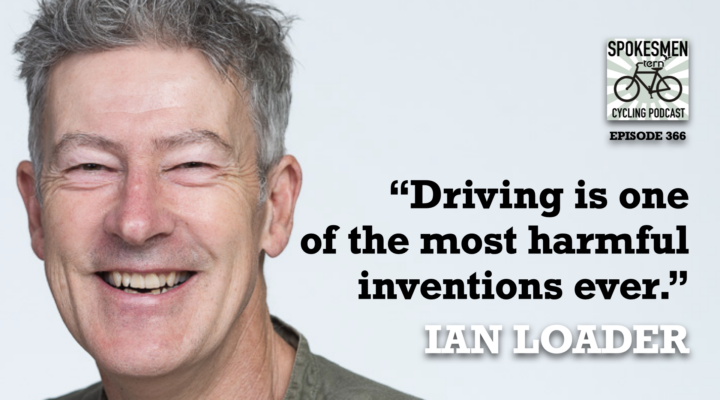
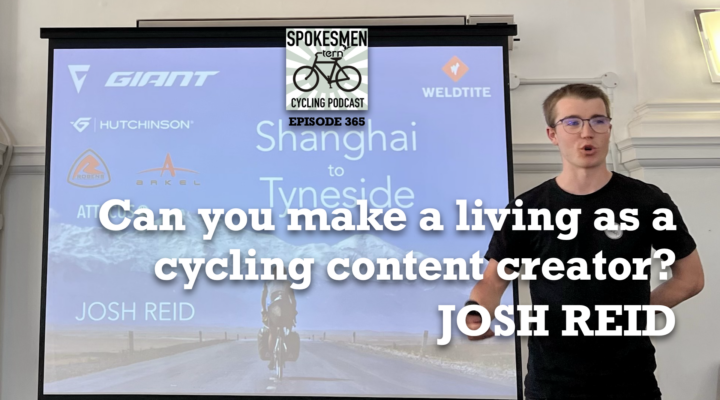
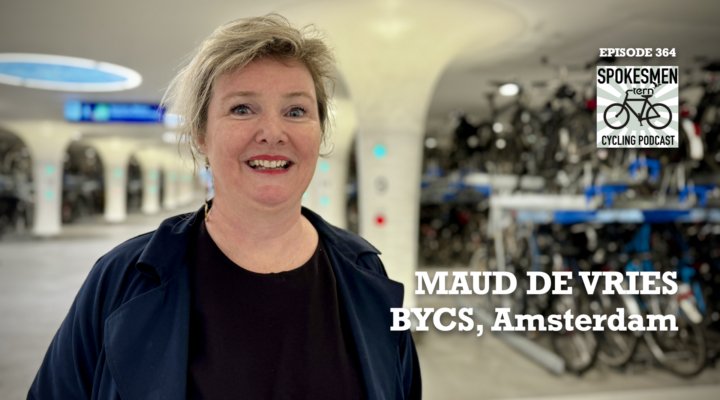
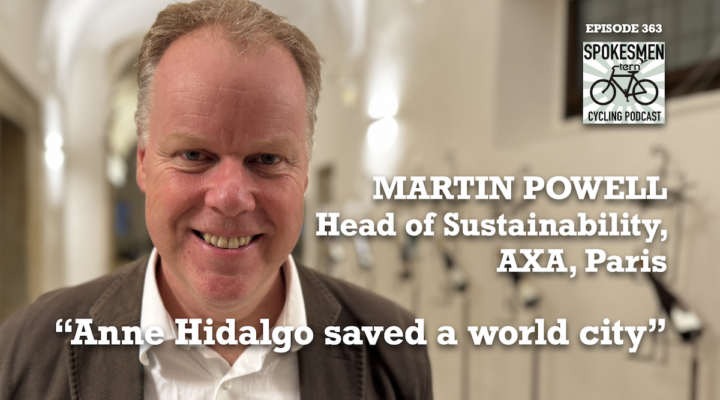
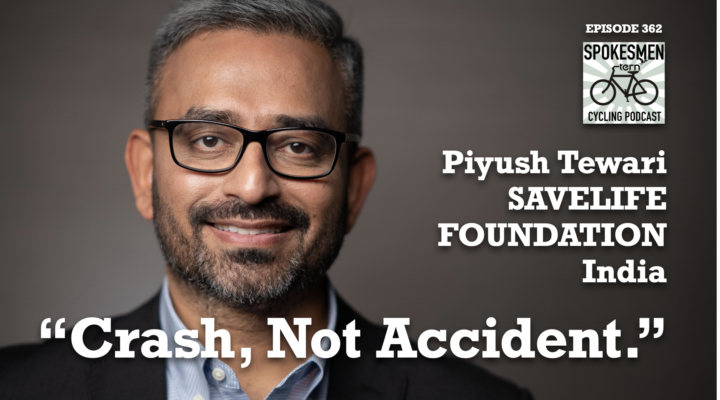
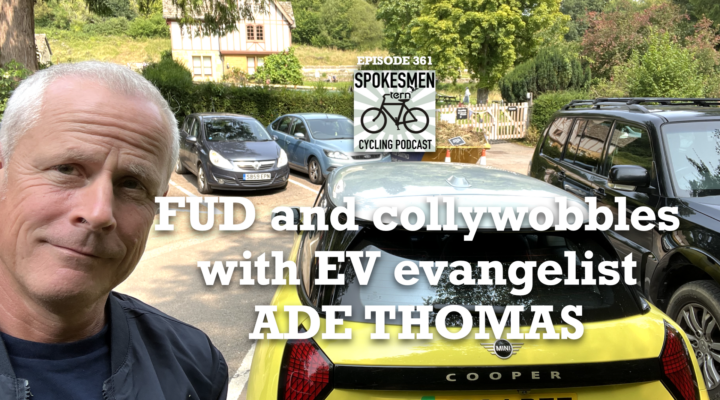
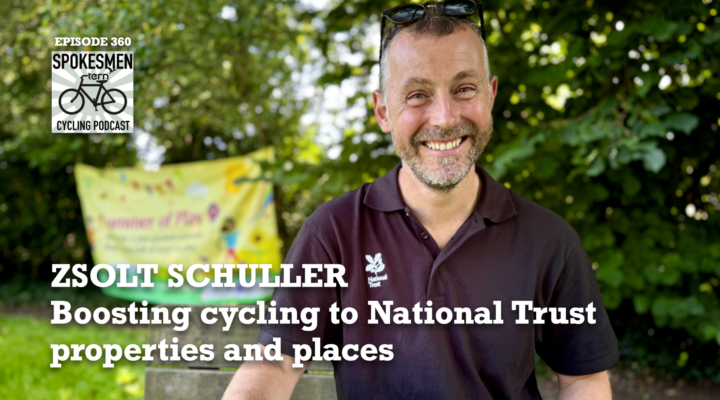
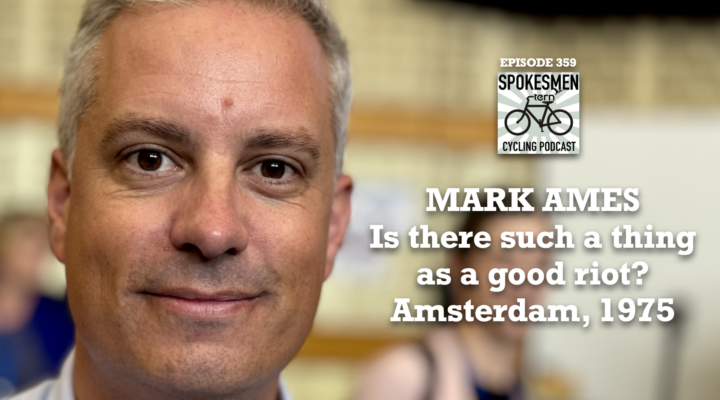
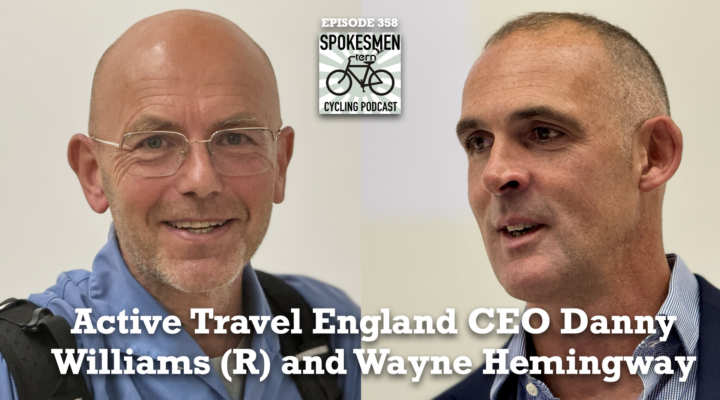
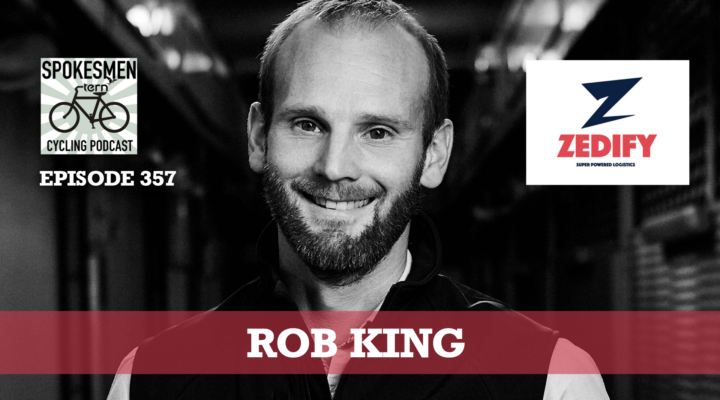
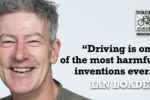
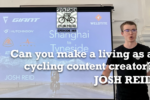
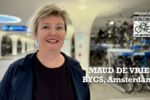
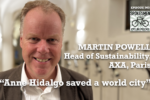
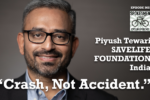
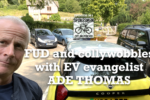
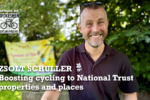
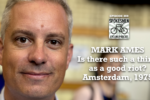
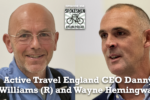
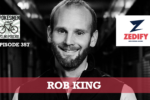
Be First to Comment